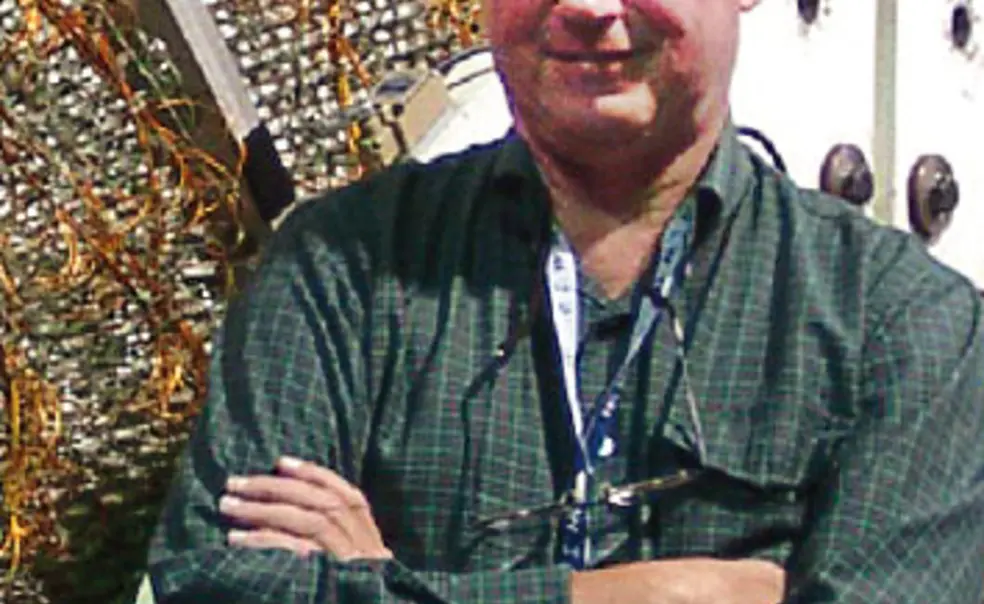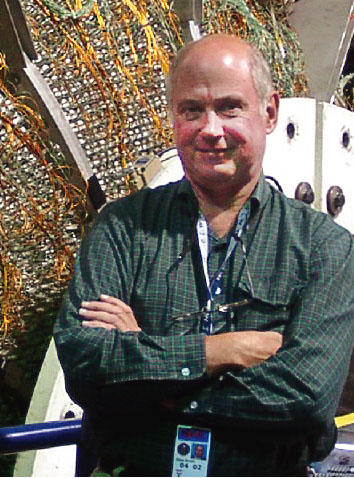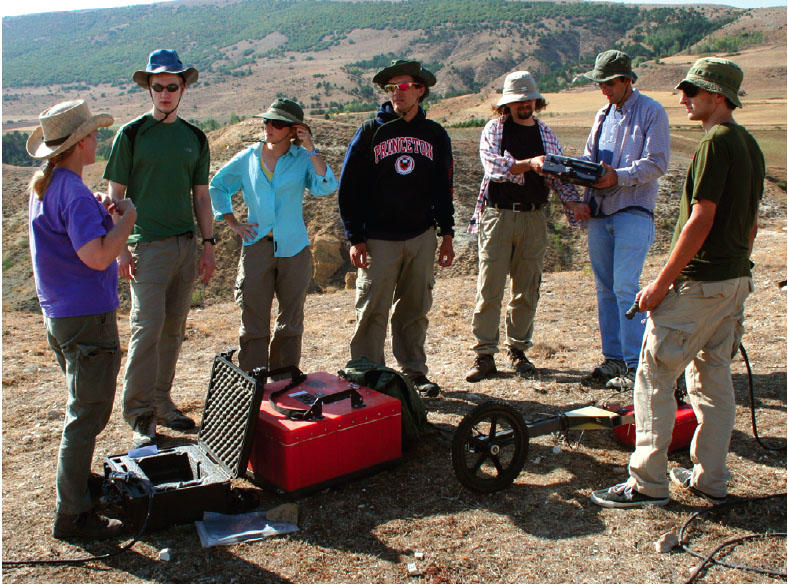President's Page
The Alumni Weekly provides these pages to the president.
Princeton has long been a center of groundbreaking research in the sciences and engineering, but the nature and scale of this research have evolved significantly since World War II and continue to do so. I have invited A. J. Stewart Smith *66, the Class of 1909 Professor of Physics and Princeton’s first dean for research, to reflect on these changes and to give you an overview of the kind of research in which our faculty and students are engaged today.—S.M.T.Princeton stands out among the world’s “top 10” research universities because of its small size and single faculty dedicated to the University’s dual mission: to conduct research and to provide an unparalleled education to our students. Dating back to Woodrow Wilson’s time, this model depends on Princeton’s ability to recruit world-leading researchers who also love teaching, because it takes people actively creating new knowledge to stimulate young minds and bring them to the frontiers of discovery.
As they should, students at all levels expect and receive ready access to these scholars, not only in classes but also in the labs and libraries where knowledge is created and transferred to the next generation. Fortunately, many of the world’s best researchers also love to teach, and these are the people who choose to join the Princeton faculty.
Princeton’s clear and simple research policies reflect our belief that research should advance, preserve, and disseminate knowledge and engage undergraduates, graduate students, and postdoctoral researchers as an integral part of their education. Importantly, it should also serve the public interest and welfare. These criteria apply equally to all research at Princeton, whether sponsored by the federal government, corporations, foundations, or individuals. The dean for research position was created three years ago to integrate and enhance the management of sponsored research and technology licensing and to improve relations with our sponsors in government, corporations, and foundations. As the first incumbent, I am still learning on the job, but I already know that my staff and I must do all we can to advocate for and communicate the importance of research and to assist our outstanding faculty members prepare compelling proposals required to win funding in today’s ultra-competitive environment. One of my office’s primary missions is to reduce the administrative load on investigators in order to give them more time for research. We also try to find seed funding to prime the pump for new ideas that do not fit neatly within the pigeonholes of funding agencies. Imagine our excitement last fall when Eric Schmidt ’76 and his wife, Wendy, endowed a $25 million Transformative Technology Fund to support innovative research that risk-averse funding agencies would be reluctant to embrace. The first competition is underway, and the response has been overwhelming. We look forward to making the first awards this spring.
To appreciate the scale of sponsored research here, in 2009 the University received about $160 million in funding, approximately 85 percent from the federal government and the remainder from corporations and foundations. In addition, the Department of Energy’s Princeton Plasma Physics Laboratory (PPL), for which Princeton has administrative oversight, received $75 million for research in magnetic fusion. Prospects for 2010 are bright, with $22 million in stimulus funding and several new large awards already in hand.
Though limitations of space make it impossible to do justice to Princeton’s thriving research enterprise, I shall try to illustrate the breadth, depth, and impact of our many exciting world-class research activities and to explain how research is organized and supported in today’s austere and complianceconscious environment. In the last year alone, Princeton researchers and their collaborators have, for example, identified a significant breast cancer gene linked to metastasis, made the first direct observation of a planet-like object orbiting a star other than our sun, taken important steps toward improved flu vaccines, proposed a new way to allocate responsibility for carbon emissions, and launched historical and archaeological studies of the Byzantine village Avkat with a novel, high-tech interdisciplinary approach.
Before World War II, research at Princeton largely ran itself, with individual faculty members conducting activities that could be funded within the University, at similar levels of support across the academic divisions. The war transformed research in the sciences and engineering into technologically intensive experiments, necessitating large facilities that required funding at a level that only federal research agencies could provide. Government support was here to stay: the unexpected applications of basic research in physics had proven so decisive militarily that the U.S. wanted to be sure it remained in the lead. The assumption of American scientific dominance was severely shaken by the launching of Sputnik in 1957, and led the federal government to make even greater investments in science and engineering. Thus a golden age of American research was born, in which curiosity-driven discoveries produced profound new understandings and big practical payoffs: MRI scanners, lasers, nuclear medicine, integrated circuits, microprocessors and personal computers, the Internet, and more.
With the end of the Cold War, it was no longer accepted as “given” that fundamental research should be funded because of its serendipitous benefits. Instead, there was a growing expectation that it should have clearly articulated social and economic benefits. Concerned that this new paradigm was unintentionally damaging American competitiveness, the National Academies carried out a study in 2005 chaired by Norman Augustine ’57 *59. The resulting influential report, “Rising Above the Gathering Storm,” issued a stern warning: “Scientific and technological building blocks critical to our economic leadership are eroding at a time when many other nations are gathering strength. We fear the abruptness with which a lead in science and technology can be lost—and the difficulty of recovering a lead once lost, if indeed it can be regained at all.”
If the funding landscape has not been as robust as we would like since 2005, the broad support for research generated by this report has been exceedingly important and has kept research budgets relatively strong in a time of fiscal peril. In the last few decades, basic research has become increasingly interdisciplinary as, time and again, expertise and technology from many traditional disciplines and multiple institutions have been required to address the most compelling questions. Princeton’s small size, interconnected faculty, and forward-looking leadership have positioned us well as we both adapt to and help drive this ongoing evolution.
One of the most exciting recent examples of this interdisciplinary trend in research was Princeton’s selection last fall by the National Institutes of Health to lead the Princeton Physical Sciences-Oncology Center (PPS -OC), one of 12 such national centers. Funded at a level of $15.2 million over five years, the center has the goal of understanding how the evolution of cancer leads to metastasis and drug resistance at a deep theoretical and experimental level by leveraging the strengths of an interdisciplinary team of physicists, engineers, chemists, biochemists, and oncologists. Collaborating with Princeton will be the University of California-San Francisco, the Johns Hopkins Hospital, the University of California-Santa Cruz, and the Salk Institute for Biological Studies in La Jolla, California. What a difference from my graduate student days long ago, when research was performed almost entirely within a discipline and most Princeton researchers were supported by individual investigator grants, except in “big science” activities led by the likes of Lyman Spitzer in astronomy and plasma science or in the space program in the mechanical and aerospace engineering department, where large group grants provided facilities, technical infrastructure, and comprehensive support for researchers and graduate students.
Today’s landscape, in contrast, features a host of outstanding interdisciplinary centers including the Center for Information Technology Policy, the Bendheim-Thoman Center for Research on Child Wellbeing, the Center for Quantitative Biology, the University Center for Human Values, the Energy Frontier Research Centers for combustion science, the National Science Foundation-funded Mid-Infrared Technologies for Health and the Environment Center, and many others. In fact, almost one-third of Princeton’s external research funding in 2009 flowed through interdisciplinary centers.
In each case, we see investigators from various fields and divisions of the University joining together to identify and attack problems that would otherwise be intractable. For example, the Carbon Mitigation Initiative, a recently renewed joint research partnership of Princeton and BP centered in the Princeton Environmental Institute, involves researchers from the Department of Geosciences, the Department of Ecology and Evolutionary Biology, multiple branches of engineering, and the Woodrow Wilson School. This is just one of many instances in which excellence in public policy is as necessary as excellence in science and technology.
The blossoming of interdisciplinary research efforts is paralleled by the growth in the number of Princeton researchers who are conducting research abroad, a trend that resonates with Princeton’s recent initiatives to encourage graduate and undergraduate students to undertake international experiences. How exhilarating to contemplate Princeton faculty and students in Turkey exploring ancient mysteries in the Avkat hills, in Kenya studying the behavior of animals I have only seen in zoos, in Chile observing the fallout from the Big Bang, and in Switzerland hunting the Higgs boson as the Large Hadron Collider springs to life, and more.
One need only take the new shuttle across Route 1, however, (rush hour not recommended) to enter the realm of international research. PPL and the National Oceanic and Atmospheric Administration’s Geophysical Fluid Dynamics Laboratory (GFDL) continue to provide extraordinary opportunities as Princeton researchers join scientists from around the world in meeting two of the major challenges of the 21st century: developing fusion energy and heightening our ability to understand and predict climate change. Students are treated to the best of both worlds: a broad intellectual environment on campus and unique world-class facilities.
I strongly believe that the Princeton University community and society at large want and are entitled to share in the knowledge made possible by their support and to get a feel for the insight, enthusiasm, hard work, and even luck it takes to make a discovery. And so, in collaboration with the Office of Communications and the Office of Engineering Communications, we will be expanding the breadth and depth of communication about Princeton research in the coming months.
We want to get this right, so as we go forward, we need and welcome your participation, and I invite you to send me your feedback.















No responses yet